Celebrate St Patrick's Day with this week's release
5-6 minute read
By Jessie Ohara | March 18, 2022

Discover picturesque Irish scenery and more.
To mark St Patrick's Day, we're spotlighting Irish records and newspapers this week. With many Irish records destroyed or lost over the past centuries, each new collection is a hugely important resource in tracing your Irish ancestors. Here's a rundown of everything that's new this week.
Waterford County Burial Records 1850-1950
This brand new index is an online exclusive, and contains over 17,000 burial records from the county of Waterford, south east Ireland. It details burials from three different cemeteries - St. Carthage's Cemetery, St. Declan's Cemetery, and St. Otteran's Cemetery. The information varies between records, but you may be able to discover death date, burial date, age, and more.
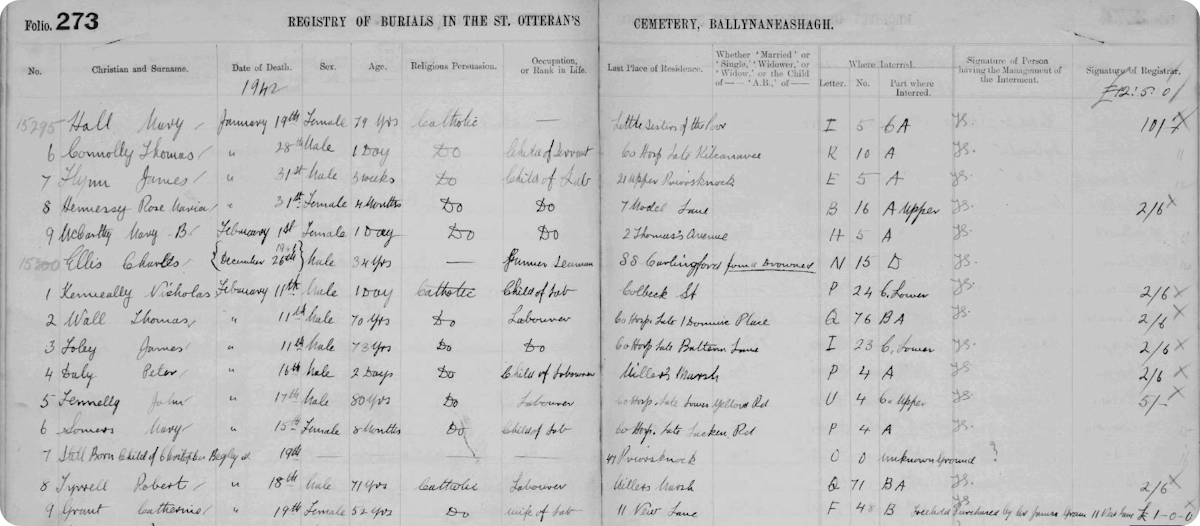
A snapshot of burial records from St. Otteran's Cemetery, Ballynaneashagh.
Waterford is Ireland's oldest city, with some believing it was founded by the Vikings in 853 AD, and others later in 914 AD. However, Mesolithic people are known to have been in this area of Ireland some 8000 years ago, and Celtic tribes overcame the indigenous inhabitants around 2500 years ago. With them they brought iron weapons, the ability to build roads and forts, and the Goidelic Celtic language - which Scottish and Irish Gaelic derives from.
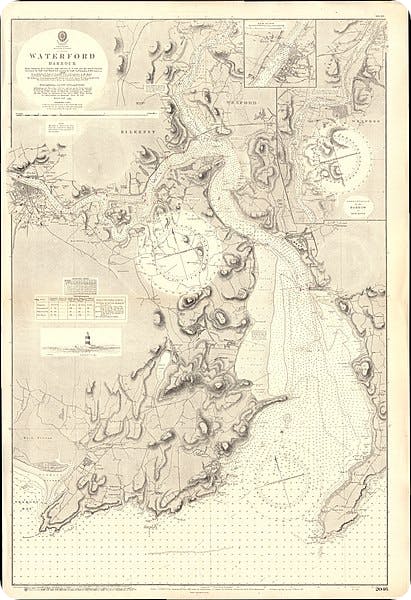
Nautical map of Waterford Port, 1882.
Beyond the 12th century, Waterford became a major trading port, often trading with Britain, France, Spain, and Portugal. It was declared a Royal City in 1171, and resisted sieges all the way into the 15th century. Despite this, Oliver Cromwell brought the city back under English rule in 1650, after his son-in-law took Waterford in its first successful siege for centuries.
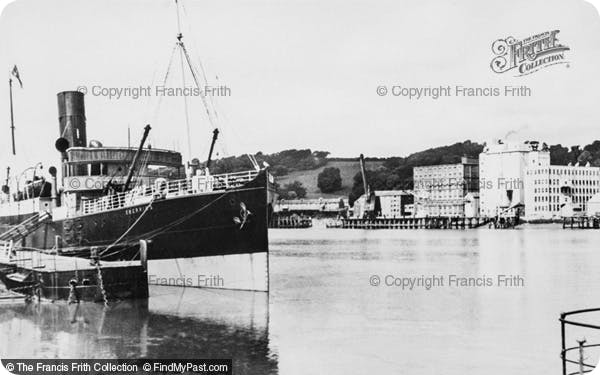
Waterford Quay, photographed in 1939, Francis Frith Collection.
However, Waterford didn't see big expansion until the 18th century. Most of Waterford's most notable architecture was past 1700, and in 1783, Waterford Crystal was founded. Waterford Crystal brought the art of glassmaking into commercial view. Industry began to thrive, and Waterford glass became world-renowned. Though it has passed through multiple dissolutions and reinstatements since 1851, the manufacturing centre in Waterford city still melts over 750 tons of crystal glass per year even to this day.
Views of Ireland
Entirely free to view, Views of Ireland is a collection that transports you to the stunning scenery of Ireland's most picturesque landscapes. Containing 117 images, it comprises both colourised photos and illustrations between 1800 and 1900.
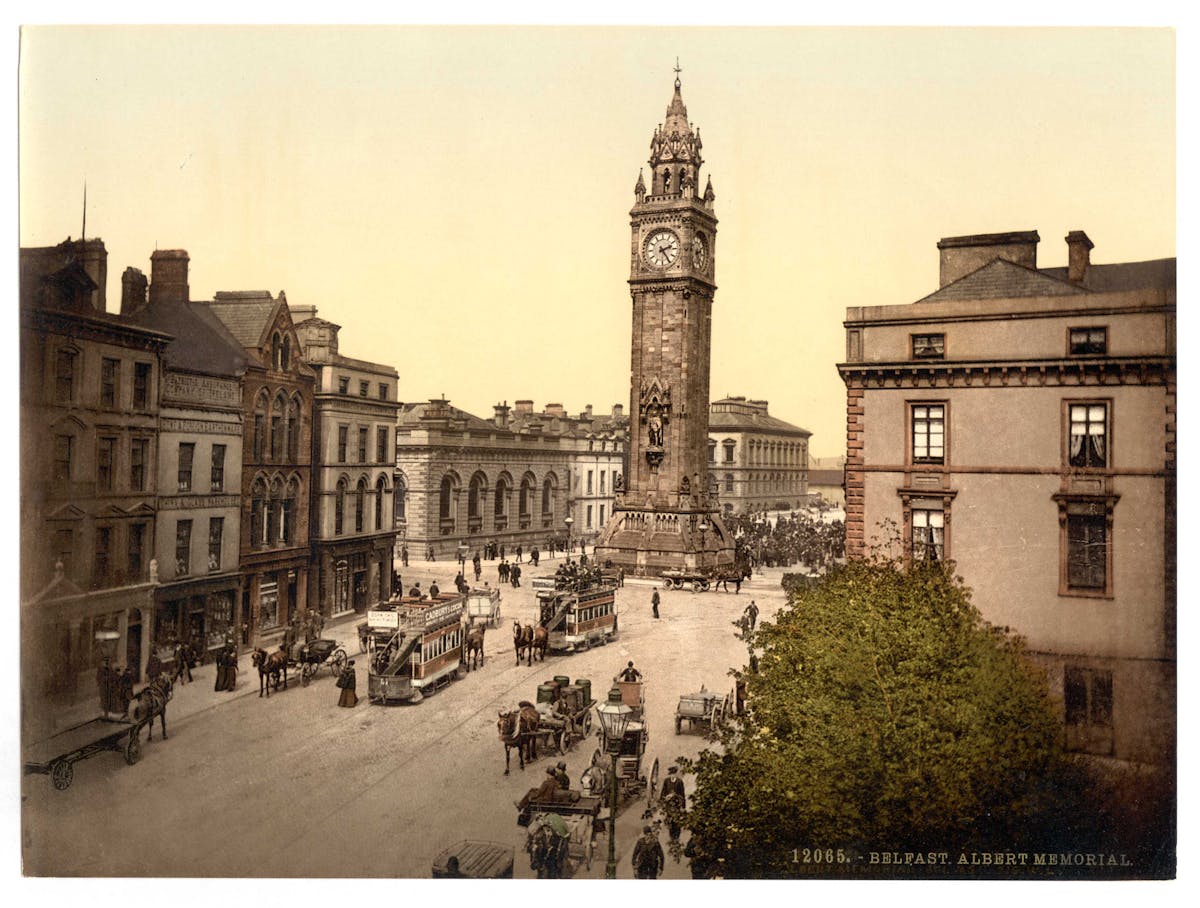
Albert Memorial, Belfast, from the Views of Ireland collection. © Library of Congress Prints and Photographs Division Washington, D.C.
Locations in the Republic of Ireland dominate this collection, including the following counties:
- Clare
- Cork
- Donegal
- Dublin
- Galway
- Kerry
- Kilkenny
- Limerick
- Louth
- Sligo
- Waterford
- Wicklow

Kilkenny Castle, from the Views of Ireland collection. © Library of Congress Prints and Photographs Division Washington, D.C.
Subject matters vary from image to image, covering everything from glittering coastal scenes, rolling green hilltops, and on the odd occasion, an individual.
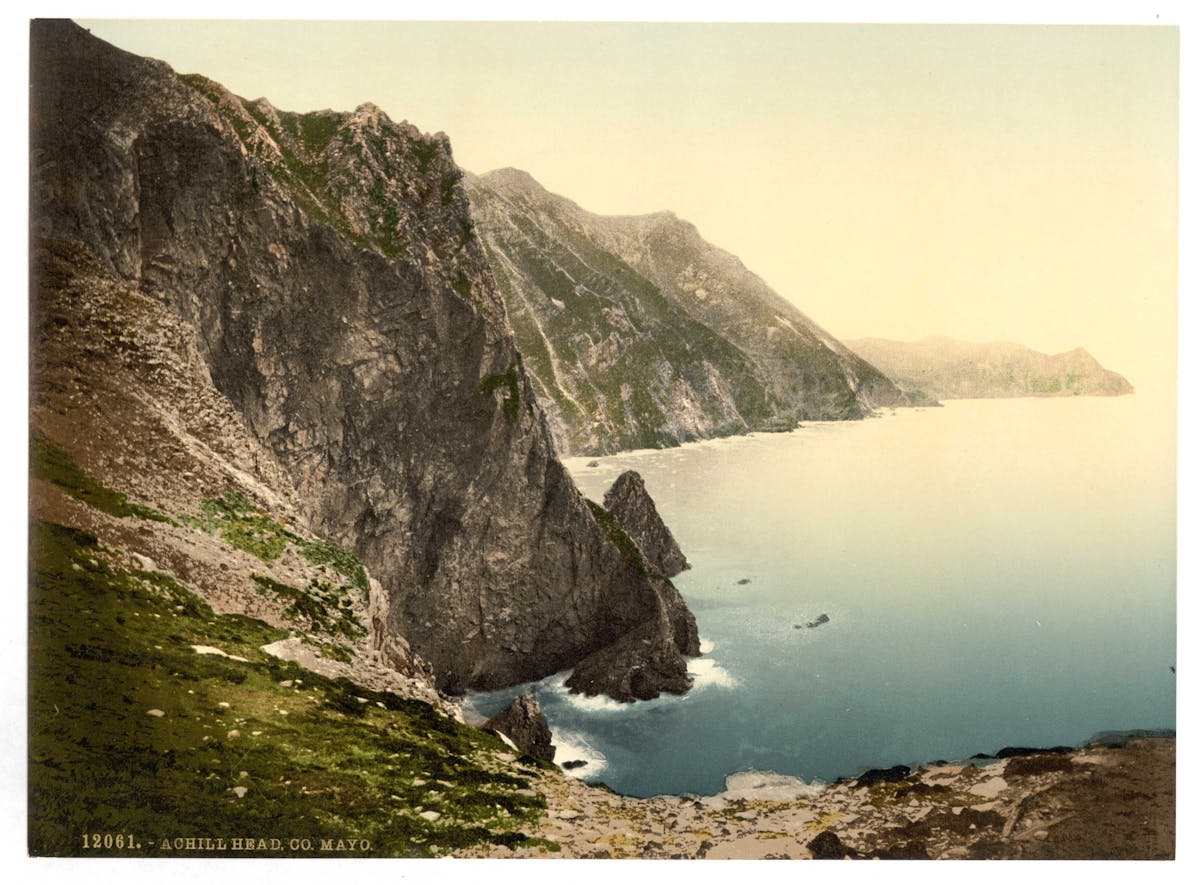
A coastal scene in County Mayo, West Ireland, from the Views of Ireland collection. © Library of Congress Prints and Photographs Division Washington, D.C.
Browsing this collection, it's easy to imagine your ancestor strolling through the picturesque rural scenery or the bustling streets of the Irish towns. You'll find yourself getting lost while pouring over these images, helping you to build a more colourful picture of your ancestors' lives.
The notorious challenge of Irish genealogy
Irish family history can be more difficult to research than other areas. With damaged and lost records contributing to large gaps in Irish history, every record set, every image, every name becomes all the more important. Here are three quick tips for researching your Irish ancestors and smashing that brick wall.
1. Don't disregard diaspora
Migration has always been a huge part of Irish history. The Great Irish Famine, both World Wars, and the development of major Irish trading ports all contribute to the history of Irish diaspora. In the 1921 Census, for example, we discovered 364,747 people of Irish nationality living in England, and it is well-known that many Irish citizens moved to the USA for better economic prospects in the 18th and 19th centuries. This Passenger Lists Leaving UK index covers all Irish ports before partition in 1921, while the Irish Famine Immigrants index details the Irish nationals that left Ireland for the USA between 1846 and 1851. Make sure to check them out, and if you spot a name you recognise, work backwards from there.
2. Try unusual collections
Discovering an Irish ancestor often isn't as simple as just searching a census and uncovering their whole family. The majority of records from the 19th century were destroyed in a fire, and civil registration started much later in Ireland than in England. It's worth exploring more unusual sources or substitutes during your research. Perhaps you'll discover an ancestor's brush with the law in the Petty Sessions Court Registers, or Irish Prison Registers 1790-1924. On the other hand, workhouse records are an excellent resource not only for discovering inmates, but also staff and suppliers, and poverty relief loans were sometimes given to those struggling. Try this collection which details government aid given to those in need, or the County Clare Guardian of Minute Books.
3. Social history is our history
While spotting individual ancestors on a record is certainly the goal, it's also important to gain a broader perspective on the social landscape and local history of the time. This can indicate valuable context such as changing place names, political debates, the building or demolishing of infrastructure, employment rates, or even - in some lucky cases - help you discover your ancestor's story. Our newspaper archive has over 100,000,000 articles from Ireland, dating all the way back to 1704 and extending as far as 2009. Search for places, buildings, companies, or even individuals - who knows what you may discover?
And on that note...
This week's newspaper release sees an immense 320,174 new pages, with an amazing 5 brand new Irish titles and 8 new British titles. Discover the political landscape in the Leitrim Journal, explore local news in the Limerick Gazette, or peruse football and athletics reports in Ireland's Saturday Nights. Here's a full list of what's new to our extensive newspaper archive this week.
New titles:
- Accrington Observer and Times, 1897, 1988
- Boston Target, 1992
- Cheshunt and Waltham Mercury, 1990
- Dungannon News, 1893-1906
- Football Gazette (South Shields), 1906-1915, 1919-1939, 1946-1959
- Frontier Sentinel, 1904-1960
- Ireland’s Saturday Night, 1874, 1895-1922, 1924-1929, 1931-2008
- Leitrim Journal, 1850-1872
- Limerick Gazette, 1804-1820
- Middlesbrough Herald & Post, 1988
- Sports Gazette (Middlesbrough), 1931
- Stockport County Express, 1912
- Wokingham Times, 1989-1990
Updated titles:
- Abergele & Pensarn Visitor, 1987
- Acton Gazette, 1982
- Airdrie & Coatbridge Advertiser, 1984-1985, 1988
- Birmingham Mail, 1990-1991
- Blairgowrie Advertiser, 1987
- Bracknell Times, 1991
- Bridge of Allan Gazette, 1885-1886
- Burton Daily Mail, 1988-1989, 1992
- Caernarvon & Denbigh Herald, 1831, 1837
- Cambridge Daily News, 1988
- Cambridge Independent Press, 1950
- Cambridge Town Crier, 1987
- Carmarthen Journal, 1992
- Central Somerset Gazette, 1990
- Cheshunt and Waltham Mercury, 1990
- Coleshill Chronicle, 1987
- Croydon Times, 1888
- Derby Express, 1992
- Dorking and Leatherhead Advertiser, 1987
- Dublin Weekly News, 1861
- Dumfries and Galloway Standard, 1987
- Ellesmere Port Pioneer, 1991
- Express and Echo, 1889
- Haverhill Echo, 1988-1989
- Herald Cymraeg, 1932-1934, 1936
- Hertford Mercury and Reformer, 1990
- Herts and Essex Observer, 1990-1991
- Hoddesdon and Broxbourne Mercury, 1990-1991
- Huddersfield Daily Examiner, 1989
- Kent & Sussex Courier, 1987, 1992
- Limerick Reporter, 1890, 1892-1894
- Liverpool Evening Express, 1929, 1952-1955
- Liverpool Journal of Commerce, 1873, 1898
- Lurgan Times, 1886
- Manchester Courier and Lancashire General Advertiser, 1873
- Marylebone Mercury, 1991
- North Star (Darlington), 1888-1896, 1901-1910, 1913-1914, 1917-1918, 1921-1922
- Nottingham Evening Post, 1990
- Oldham Advertiser, 1987
- Paisley Daily Express, 1881, 1990, 1992
- Retford, Gainsborough & Worksop Times, 1889, 1991
- Richmond Informer, 1991
- Rutherglen Reformer and Cambuslang Journal, 1880-1881, 1883-1884
- Southall Gazette, 1991-1992
- Spalding Guardian, 1986-1988
- Stirling Observer, 1992
- Suffolk and Essex Free Press, 1988-1989
- Uxbridge Leader, 1987
- West Surrey Times, 1889
Something catch your eye? Just head to our newspaper archive and use the 'Filter by Newspaper' button to select the title you want. Alternatively, you can search all of our new Irish titles here, or all of our new British titles here.
Do you have an amazing Irish ancestor? Make sure to tag us on social @findmypast or email [email protected] with the full story for a chance to be featured.
Related articles recommended for you
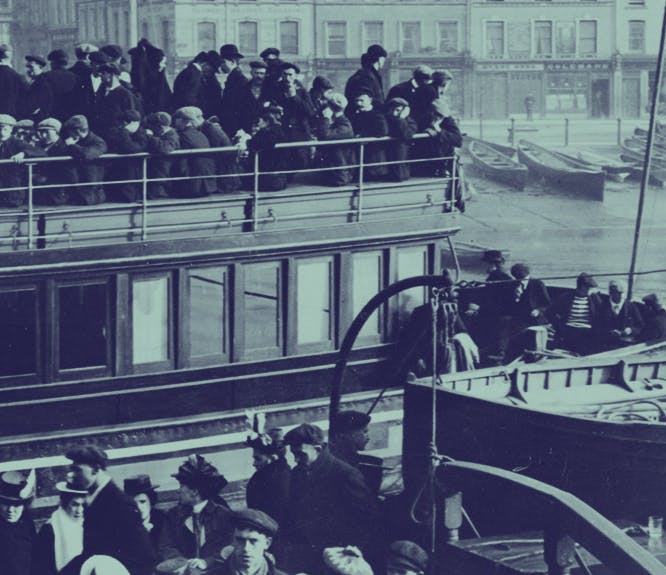
Irish genealogy deep-dive: Discover the remarkably rich Irish family history behind Irish diaspora through the centuries
Help Hub

The Black Loyalists and the importance of preserving Black genealogy records
Family Records

New additions from Auckland to Ahmedabad...
What's New?

